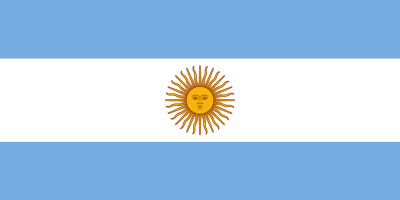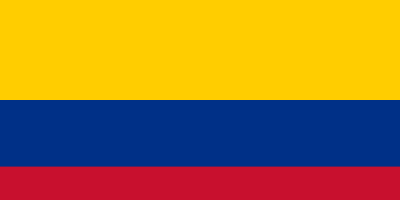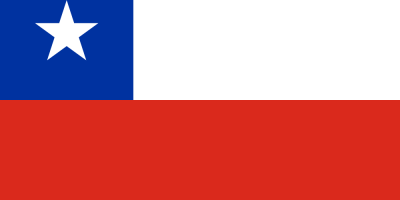Brazil flag color codes features a vibrant green and yellow lozenge with a blue celestial globe. The colors hold deep meaning and represent key elements of Brazilian culture and history. In this article, we provide Brazil flag color codes in formats including HEX, RGB, PANTONE, HSL, CMYK, HWB, and NCOL. Whether you need accurate colors for apparel, graphic design, decorations, or any other application, this article equips you with the specific color values and codes for the iconic flag of Brazil. With the Brazil flag color codes, developers, artists, fashion designers, and other creatives can easily integrate the correct green, yellow, blue, and white into their work. Whether crafting designs for Brazil Independence Day or building visualizations of South American data, this article gives you the precise Brazil flag color codes you need in HTML, RGB, Pantone, and more.
Table of Contents
What are the colors of Brazil flag?
- Green – The green background takes up the majority of the flag. It represents Brazil’s abundant forests, fields, and plant life.
- Yellow – The yellow lozenge shape in the center symbolizes Brazil’s gold reserves and mineral wealth.
- Blue – The blue celestial globe in the center of the yellow diamond represents the sky over Rio de Janeiro on the morning of Brazil’s independence declaration.
- White – Narrow bands of white separate the green from the yellow diamond. White represents peace and harmony.
In summary, the four colors of the flag are:
- Green for Brazil’s natural resources and landscapes
- Yellow for its mineral wealth
- Blue for the sky on the iconic day of independence
- White for peace and unity
The iconic green and yellow lozenge with the blue globe is a bold and meaningful design. It was adopted as the official Brazilian flag in 1889 and remains an important national symbol representing the country’s identity.
Brazil flag color codes & Color Names:
GREEN
| Color Model | Values |
|---|---|
| HTML | #009B3A |
| HEX | 009B3A |
| RGB | (0, 155, 58) |
| PANTONE | 3425 C |
| HSL | (144°, 100%, 30%) |
| CMYK | (100%, 0%, 63%, 39%) |
| HWB | (144°, 0%, 39%) |
| NCOL | N/A |
YELLOW
| Color Model | Values |
|---|---|
| HTML | #FFCC29 |
| HEX | FFCC29 |
| RGB | (255, 204, 41) |
| PANTONE | 1235 C |
| HSL | (44°, 100%, 57%) |
| CMYK | (0%, 20%, 84%, 0%) |
| HWB | (44°, 0%, 0%) |
| NCOL | N/A |
BLUE
| Color Model | Values |
|---|---|
| HTML | #002776 |
| HEX | 002776 |
| RGB | (0, 39, 118) |
| PANTONE | 280 C |
| HSL | (215°, 100%, 23%) |
| CMYK | (100%, 67%, 0%, 54%) |
| HWB | (215°, 0%, 54%) |
| NCOL | N/A |
WHITE
| Color Model | Values |
|---|---|
| HTML | #FFFFFF |
| HEX | FFFFFF |
| RGB | (255, 255, 255) |
| PANTONE | White |
| HSL | (0°, 0%, 100%) |
| CMYK | (0%, 0%, 0%, 0%) |
| HWB | (0°, 100%, 0%) |
| NCOL | N/A |
What is the meaning of colors in the Brazil flag?
- Green – Represents Brazil’s abundant forests, fields, and plant life. Green symbolizes hope, nature, and the country’s agricultural resources.
- Yellow – Represents Brazil’s mineral wealth and gold reserves. Yellow symbolizes prosperity, wealth, and natural resources.
- Blue – Represents the sky over Rio de Janeiro on November 15, 1889 when the flag was first flown after Brazil became a republic. Blue symbolizes progress, innovation, and independence.
- White – Represents peace and unity for all Brazilians. White symbolizes harmony, order, and the desire for progress.
In summary:
- Green refers to Brazil’s landscapes and agriculture
- Yellow represents Brazil’s mineral and gold wealth
- Blue recalls the skies on Brazil’s first day as a republic
- White signifies peace and unity
The green and yellow lozenge shape surrounded by white was intended to merge Brazil’s abundant natural resources with its people’s desire for progress and unity. The meanings behind each color make the flag a symbol of Brazil’s natural identity and aspirations as a nation.
Explore More Flag Colors:
- Togo Flag Color Codes
- Zimbabwe Flag Color Codes
- Central African Republic Flag Color Codes
- Saint Vincent and the Grenadines Flag Color Codes
FAQs: Frequently Asked Questions:
Is Brazil a rich or Poor country?
Brazil is considered a middle-income country. It has a diverse economy with strengths in sectors such as agriculture, manufacturing, services, and natural resources. Brazil is one of the world’s largest economies by nominal GDP and has abundant natural resources, including minerals, agricultural land, and freshwater resources.
What is Brazil best known for?
Here are some of the things Brazil is best known for:
Carnival: Brazil’s Carnival is one of the largest and most famous festivals in the world. Held annually before Lent, Carnival is a vibrant celebration featuring colorful parades, samba music, dancing, and elaborate costumes. Rio de Janeiro’s Carnival is particularly renowned for its extravagance and energy.
Soccer (Football): Brazil is famous for its passion for soccer (known as football in most of the world). The Brazilian national team is one of the most successful in the history of the sport, having won the FIFA World Cup a record five times. Brazilian players such as Pelé, Ronaldo, and Ronaldinho are widely regarded as some of the greatest footballers of all time.
Amazon Rainforest: Brazil is home to the majority of the Amazon Rainforest, the largest tropical rainforest in the world. The Amazon is known for its incredible biodiversity, with millions of species of plants, animals, and insects. It plays a crucial role in regulating the Earth’s climate and is considered one of the planet’s most important ecosystems.
Rio de Janeiro: Rio de Janeiro, Brazil’s second-largest city, is famous for its stunning natural beauty, including iconic landmarks such as the Christ the Redeemer statue and Copacabana Beach. Rio is also known for its vibrant culture, lively street parties, and annual Carnival celebrations.
Samba and Bossa Nova Music: Brazil is known for its rich musical heritage, including genres such as samba and bossa nova. Samba is a lively and rhythmic style of music and dance that is closely associated with Carnival, while bossa nova is a more subdued and melodic style that gained international popularity in the 1960s.
Coffee: Brazil is the largest producer of coffee in the world and is famous for its high-quality coffee beans. Brazilian coffee is known for its rich flavor and smooth texture and is exported to countries around the globe.
Beaches: Brazil boasts thousands of miles of coastline and is famous for its beautiful beaches. From the urban beaches of Rio de Janeiro to the remote and pristine beaches of Fernando de Noronha, Brazil offers a wide range of beach destinations for tourists to enjoy.
What is the quality of life in Brazil?
Brazil offers a mix of opportunities and challenges in terms of quality of life:
Economic Disparities: Brazil has significant income inequality and socioeconomic disparities. While some regions, particularly urban centers like São Paulo and Rio de Janeiro, offer high standards of living and access to amenities such as healthcare, education, and entertainment, other parts of the country, especially rural areas and impoverished urban neighborhoods (favelas), may face challenges related to poverty, crime, and inadequate infrastructure.
Healthcare: Brazil has a universal healthcare system, the Sistema Único de Saúde (SUS), which provides free or low-cost healthcare services to Brazilian citizens and residents. However, the quality of healthcare can vary depending on factors such as location, infrastructure, and funding. Private healthcare services are also available for those who can afford them.
Education: Brazil has made progress in expanding access to education in recent decades, but challenges remain in terms of quality and equity. While primary education is compulsory and provided free of charge by the government, disparities exist between urban and rural schools, as well as between public and private institutions. Higher education opportunities are available through public and private universities, but access may be limited for some due to socioeconomic factors.
Safety and Security: Brazil has relatively high levels of crime and violence, particularly in urban areas and disadvantaged neighborhoods. Issues such as drug trafficking, gang violence, and petty crime can affect the safety and security of residents and visitors. However, security measures and policing efforts vary across different regions of the country.
How many states are in Brazil?
The 26 states are:
Acre
Alagoas
Amapá
Amazonas
Bahia
Ceará
Espírito Santo
Goiás
Maranhão
Mato Grosso
Mato Grosso do Sul
Minas Gerais
Pará
Paraíba
Paraná
Pernambuco
Piauí
Rio de Janeiro
Rio Grande do Norte
Rio Grande do Sul
Rondônia
Roraima
Santa Catarina
São Paulo
Sergipe
Tocantins
Is Brazil safe country?
It’s essential for visitors and residents alike to take precautions to ensure their safety in Brazil:
Stay Informed: Research the safety situation in specific areas you plan to visit and stay informed about any local safety advisories or travel warnings.
Use Common Sense: Practice common sense safety measures such as staying alert and aware of your surroundings, avoiding risky areas, and securing your belongings.
Stay in Secure Accommodations: Choose reputable hotels or accommodations with good security measures, especially in urban areas.
Avoid High-Risk Situations: Avoid walking alone at night, displaying valuable items openly, or engaging in risky behavior.
Use Reliable Transportation: Use reputable transportation options, such as registered taxis or rideshare services, especially at night.
Respect Local Laws and Customs: Familiarize yourself with local laws and customs and act respectfully toward local residents and authorities.
Seek Local Advice: When in doubt, seek advice from locals or trusted sources about safety tips and recommendations for specific areas.
What language is spoken in Brazil?
The official language of Brazil is Portuguese. Portuguese is the primary language spoken by the vast majority of the population, and it is used in government, education, media, business, and daily communication throughout the country.
What is Brazil’s famous food?
Some famous Brazilian foods include:
Feijoada: Feijoada is often considered Brazil’s national dish. It’s a hearty stew made with black beans and a variety of meats such as pork, beef, and sausage. It’s typically served with rice, collard greens, orange slices, and farofa (toasted cassava flour).
Pão de Queijo: Pão de queijo, or Brazilian cheese bread, is a popular snack made with tapioca flour and cheese. These small, chewy bread rolls are often enjoyed warm and are a staple of Brazilian cuisine.
Moqueca: Moqueca is a traditional Brazilian seafood stew made with fish or shrimp, coconut milk, tomatoes, onions, peppers, and cilantro. It’s typically served with rice and farofa and is popular in coastal regions of Brazil.
Churrasco: Churrasco refers to Brazilian-style barbecue, where various cuts of meat are skewered and grilled over an open flame. Popular meats include beef, chicken, pork, and sausage, and they’re often served with chimichurri sauce, farofa, and grilled vegetables.
Açaí: Açaí is a popular Brazilian superfood made from the berries of the açaí palm tree. It’s typically served as a thick, purple smoothie bowl topped with granola, fruits, and honey, and it’s enjoyed as a refreshing and nutritious snack.
Coxinha: Coxinha is a popular Brazilian snack consisting of shredded chicken wrapped in dough, shaped into a teardrop or drumstick, breaded, and deep-fried until golden and crispy.
Caipirinha: While not a food, Caipirinha is Brazil’s national cocktail and is made with cachaça (a distilled spirit made from sugarcane), lime, sugar, and ice. It’s a refreshing and tangy drink enjoyed throughout Brazil.
Is Brazil cheap to live?
Here are some factors to consider when evaluating the cost of living in Brazil:
Housing: Housing costs can vary widely depending on the city and neighborhood. While rents and property prices may be relatively high in major urban centers, they can be more affordable in smaller cities and rural areas.
Food: Food prices in Brazil can be relatively affordable, especially for locally-produced items such as fruits, vegetables, and grains. Dining out at restaurants can also be affordable, particularly at casual eateries and street food stalls.
Transportation: Public transportation options, such as buses and metro systems, are generally affordable in Brazil’s major cities. However, owning a car and fuel costs can be relatively expensive due to taxes and import tariffs.
Healthcare: Brazil has a universal healthcare system, the Sistema Único de Saúde (SUS), which provides free or low-cost healthcare services to Brazilian citizens and residents. However, private healthcare services can be more expensive, especially for expatriates and those without health insurance coverage.
Education: Public education in Brazil is free at the primary and secondary levels, but private schools and international schools can be relatively expensive. Higher education costs can also vary depending on the institution and program.
Utilities and Services: Utilities such as electricity, water, and internet services are generally affordable in Brazil. However, costs can vary depending on usage and location.













